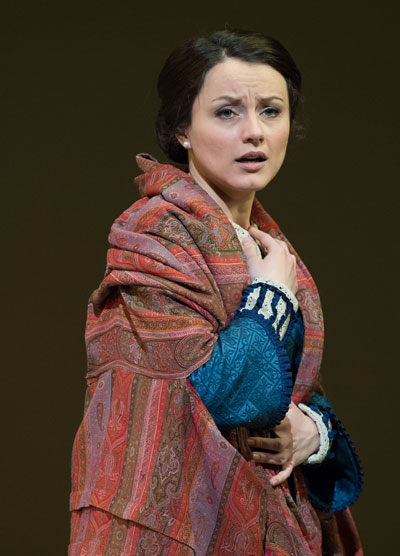I went to two of the most familiar operas in the repertoire this week, one in HD from the New York Met, the other at the Royal Opera. Both were given in decent if not, with some exceptions, outstanding performances. The experiences led me to think again about the differences between seeing an opera onstage in a theatre and seeing one ‘live’ in the cinema. Our intermission hostess, Renée Fleming, repeated the usual formula about how there is no substitute for actually being present in the theatre where the opera is taking place, but I wonder what she would say if challenged on that point.
There is a question of priorities, I think: if you go primarily to see one or more stars, then you will feel it is important that you are actually in their presence, and may well indulge in the fantasy that they are singing partly to you. And certainly if the stars are big enough, Callas, for example, or Hans Hotter, the experience of being in the same space as they are is likely to be overwhelming, though that is not primarily an artistic matter. Then there is — or was — the phenomenon of the communal experience, but that is, for almost all operatic occasions, a thing of the past. It is most likely to be found now, discreditably, in Italian opera houses, where the main reason for attendance is to hear one of the singers crack on a high note and be humiliated and with any luck booed off the stage. But opera in Italy is not primarily an artistic experience, more like a sporting one. And when you think of the involvement of a football crowd in the game, you realise how remote that is from almost any occasion you are likely to witness or participate in at Covent Garden.
So if you go to an operatic performance primarily to experience the work, hopefully with high-class performers, I’m not at all sure that you won’t do far better to go to a cinema, unless you can afford one of the best seats in the opera house. When you see the endless heights and depths of the Met you wonder, really, what is the point of being as far back as many in the audience are. And there are contingent factors, too, which shouldn’t be overlooked. When I go to a Met HD relay in Huntingdon, I am picked up and driven there and back. When I go to almost any opera in a theatre, I cycle to Cambridge station, throw myself on the mercy of one or more rail companies, and of the Tube, hope that the performance won’t run too late in case I miss the last train. Plenty of people don’t have these anxieties, but plenty do. So what is one missing if one sees an opera ‘live’ in the cinema? And does it make any difference whether you are seeing it as it actually happens or a couple of days later? I can’t see that it does — the only reason for watching the performance as it takes place being the possibility of watching a singer go to pieces, or drop dead, again hardly artistic grounds.
The cinema relay was of Rigoletto, the new production directed by Michael Mayer and set design by Christine Jones. It is set in Las Vegas in the 1960s, a place that was probably about as wicked as Mantua in the late Middle Ages. The plot is so absurd that the only jarring element in setting it in Vegas is Gilda’s enforced seclusion, though the surtitles the Met provided attempted to increase verisimilitude by adjusting what was being sung, often resorting to modern slang.
The star of the show, as surprisingly often in Rigoletto, was the Sparafucile of Stefan Kocán. Young, sexy, with a stupendous bass voice, he is condemned on account of his vocal register never to be a romantic hero. That fell to Piotr Beczala, a popular stentorian tenor who is rather more convinced of his charms than I am. Gilda was the enchanting and moving Diana Damrau, a little mature but with the ideal voice for this incipiently insipid role. The title role was taken by Zeljko Lucic, impressively, though without a hump — why? It was referred to. Michele Mariotti conducted passionately, and one resented the intervals.
La bohème at the Royal Opera, of which I saw Cast B, was the 26th revival of John Copley’s 1974 staging, famous for its ‘naturalism’, and deserving, surely, to go on for ever, so long as the revival directors animate it anew, with odd fresh touches, and letting the chief performers do what comes naturally. The outstanding performances were the Marcello of Gabriele Viviani, and the Mimì of Anita Hartig. Her singing and acting in the marvellous Act III were memorable, in a way that nothing by her Rodolfo, Teodor Ilincai, managed, worthy as he was. Alexander Joel’s conducting was outstanding, if not as individual as Semyon Bychkov’s last time round. It’s enormously to the Royal Opera’s credit that it doesn’t let such surefire productions stagnate. Would I have enjoyed it as much in the cinema? I don’t see why not.






Comments